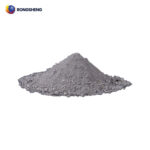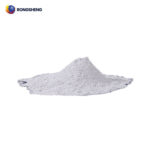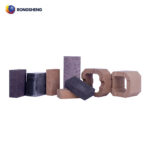Harden Press Refractory Material for Blast Furnace Repair
With the technological advancement of the steel industry, the blast furnace is developing in the direction of large-scale, high-efficiency and longevity. In the later stages of the furnace, it is necessary to repair the blast furnace. At present, when the blast furnace is repaired by the press-in method, the refractory materials used are mainly two types, the water-based bonding material and the phenolic resin as a binder.
The water-based bonding material is mainly composed of water glass, cement and phosphate. The main chemical components are Al2O3, Fe2O3, K2O+Na2O and SiC. The water-based material bonding material has high bonding strength, but the lining temperature is high when the repairing, the moisture quickly evaporates, and the repairing layer is easy to foam and fall off, resulting in the repairing portion not being dense and easily peeling off.
The material using phenolic resin as a binder is mostly composed of alumina, coke gems, carbon, and the like. For example, Sumitomo Corporation’s phenolic resin combined with repairing materials, its main chemical composition is Al2O3, SiO2, SiC or MgO, SiC, fixed carbon;
In China, the repairing materials combined with thermoplastic phenolic resin have also been reported. The main chemical components are Al2O3 SiO2, FeO3, K2O+ Na2O, TiO2.
Two kinds of phenolic resin-bonded repairing materials having different properties in the bonding agent, in order to increase the fluidity during pressing, a large amount of an organic solvent such as acetone is added, so that the organic solvent is volatilized at a high temperature after the repairing material is pressed, and a honeycomb hole is formed. The structure after sintering is not very dense and is easily destroyed by slag erosion.





